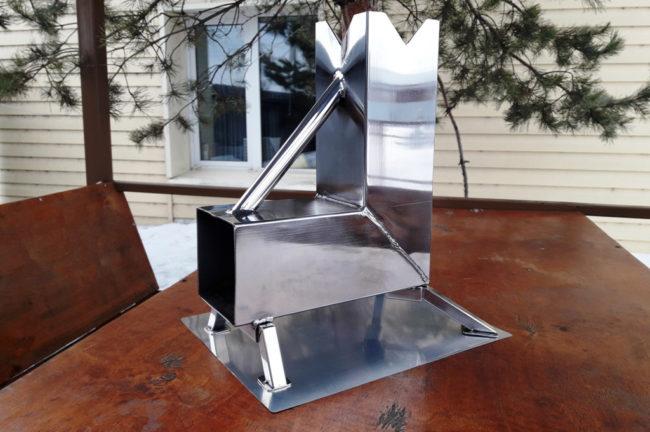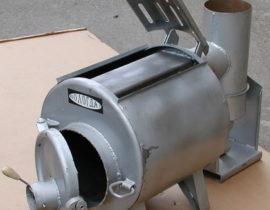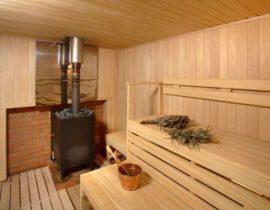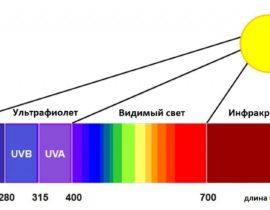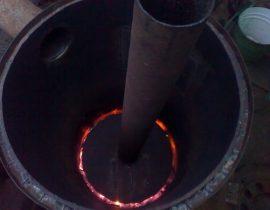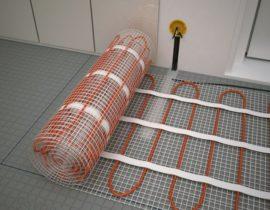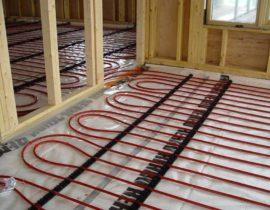Rocket stove is a compact and functional device for simple cooking and heating of small spaces. The lightness of the product allows you to take it on a hike, fishing and cottage.
Content
Rocket oven device
The device got its name due to the formation of jet thrust during combustion, accompanied by a characteristic hum, reminiscent of the sound of a rocket taking off. This product also resembles the cone-shaped design of the furnace.
There are two main types of stove design:
- Simple design
It consists of a pair of pipes that are connected to each other by a branch.
The lower tube is divided by a metal plate. Two-thirds of its length falls on the upper part, into which fuel is loaded. The lower compartment performs the function of a simple blower, which promotes the exchange of air masses. In this version of the furnace, fuel materials are laid horizontally.
The type of unit with vertical loading has in its design two tubes of different lengths, located vertically. The third one connects them and plays the role of a fuel compartment.
The simplest stove is usually placed outside and is used for cooking and heating water.
- advanced design
More suitable for indoor installation.With its help, you can heat a room up to 50 square meters. m area.
The device has a number of improvements in comparison with a simple model that increase performance and work efficiency:
- There is a second housing installed outside. The combustion tube is covered with thermal insulation material. The top of the case is hermetically sealed, which ensures a stable elevated temperature for a long period of time.
- An independent opening optimizes air intake, in the light version this function is performed less efficiently by an open fuel compartment.
- The modernized chimney passes the heated gas flow through the furnace channels, contributing to its more efficient afterburning. At the same time, the hob heats up and the heat is evenly distributed throughout the room.
Principle of operation
Depending on the structure, the principle of operation of a rocket furnace may vary, but it consists of two main processes:
- There is a natural circulation of heated air and gases through the channels of the device. The draft inside the furnace is formed by the chimney system, increasing with the increase in the location of the chimney. Additional blowing unit is not needed.
- The pyrolysis process is carried out - the remaining gases are burned out with a small supply of oxygen to the furnace. This increases efficiency and improves fuel efficiency.
The operation of the device includes the following steps:
- Firewood is loaded into the firebox and set on fire.
- The furnace starts to work in the standard mode, warming up the vertical element of the structure.
- The heated body creates favorable conditions for the ignition of volatile substances in the chimney pipe and the vacuum in the upper part of the air masses.
- The draft increases, the flow of air into the furnace increases and combustion intensifies.
For complete burning of fuel in the stove, a compartment for pyrolysis gases must be equipped.
Advantages and disadvantages
The rocket stove has a number of positive qualities due to which it is popular:
 Functionality - the device is suitable for cooking, heating plumbing and premises.
Functionality - the device is suitable for cooking, heating plumbing and premises.- Simple design and hassle-free assembly. An elementary oven can be constructed with your own hands from improvised materials.
- Good thermal conductivity when working with wood fuels (chips, shavings, firewood, bark, branches).
- Complete burnout of fuel with burning out of pyrolysis gases. This prevents the release of carbon monoxide and increases efficiency.
- No need to form forced draft in the chimney. Increased self-regulation of the device.
- Possibility of refueling without stopping the combustion process.
A multifunctional and easy-to-use unit also has some disadvantages:
- It is impossible to automate the firing process. Devices need periodic manual loading of consumables.
- The stove is not suitable for heating large rooms and baths.
- There is a high risk of burns from accidental contact with the metal case.
- It is required to use dry fuel for bookmarking, excess moisture in the material can cause reverse thrust.
- Unattractive appearance.
Product types
The units differ in the material of construction:
- metal - usually constructed from barrels, fire extinguishers, pipes, gas cylinders, sheet steel. The prevalence and availability of components makes it possible to manufacture a reliable and productive device.
- Clay-brick - Chamotte clay and brickwork have a high heat capacity, they gain heat well and warm the room. When burning in such devices, the temperature rises to 1000 degrees. This material is also simple and unpretentious in maintenance.
- Based on improvised means - the simplest options for rocket stoves are assembled from all kinds of affordable and cheap containers - steel buckets, canned food cans. They are well suited for field use.
Popular Models
On sale are functional models of rocket furnaces from various manufacturers, differing in design and purpose.
Vesuvius Rocket Soyuz
 Model for cooking on an open fire, suitable for installation in a garden plot or summer cottage.
Model for cooking on an open fire, suitable for installation in a garden plot or summer cottage.
The design has a built-in stand, which gives the unit stability, protects against shifting and tipping over, ensuring stable operation with high loads.
Characteristics:
- body and firebox material - steel;
- type of installation - floor;
- weight - 12 kg;
- fuel - wood;
- dimensions (WxHxD) - 31x59x38 cm;
- price - 5625 p.
Vesuvius Rocket 1
 Camping and tourist mobile stove, which makes it possible to heat water and cook food in natural conditions. The model is characterized by economical consumption of firewood and high-quality heat transfer. This is the best option for fishermen, summer residents, outdoor enthusiasts and hunters.
Camping and tourist mobile stove, which makes it possible to heat water and cook food in natural conditions. The model is characterized by economical consumption of firewood and high-quality heat transfer. This is the best option for fishermen, summer residents, outdoor enthusiasts and hunters.
Characteristics:
- placement - outdoor;
- fuel - wood;
- firebox and body material - steel;
- weight - 12 kg;
- dimensions (WxHxD) - 30x57.4x39.3 cm;
- equipment - a pair of coasters for dishes;
- price - 3770 r.
Kolundrov
Portable unit for use in field conditions, hunting, picnic, fishing, cottage.
 The model is easily assembled into a stationary state, includes a firebox with a blower and a damper, a tube and a burner for placing dishes. The sliding bottom allows to get rid of ashes and the remains of fuel.
The model is easily assembled into a stationary state, includes a firebox with a blower and a damper, a tube and a burner for placing dishes. The sliding bottom allows to get rid of ashes and the remains of fuel.
Characteristics:
- body material - carbon steel;
- wall thickness - 2 mm;
- the volume of the combustion compartment - 3.2 l;
- dimensions (LxWxH) - 30.5x22x35 cm;
- work from one load - 20 min.;
- weight - 4.75 kg;
- fuel - torches, sawdust, firewood, chips, branches;
- price - 3700 r.
Vesuvius Rocket 3
 Mobile stove model with oven, suitable for heating canned food, cooking baked potatoes, etc. The unit is L-shaped, fuel efficient and easy to transport. The product is delivered without a cauldron.
Mobile stove model with oven, suitable for heating canned food, cooking baked potatoes, etc. The unit is L-shaped, fuel efficient and easy to transport. The product is delivered without a cauldron.
Characteristics:
- installation - floor;
- fuel - wood;
- material - steel;
- type - closed;
- dimensions (WxHxD) - 20x45x34 cm;
- wall thickness - 2 mm;
- equipment - two stands for placing dishes, a place for a cauldron, a built-in oven;
- weight - 8 kg;
- price - 3300 r.
Kuzma
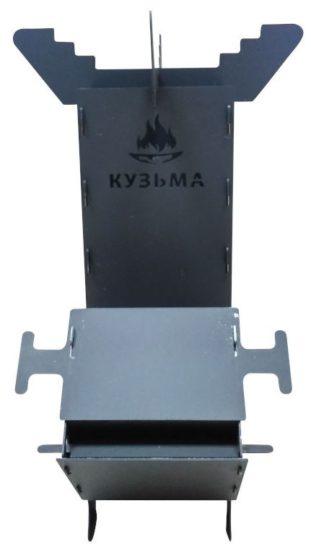 Compact turbo oven that can be dismantled for easy transport. The fire chamber is reliably protected from influence of a rain and wind. Use of the unit on snow is allowed. The stove is lightweight and durable components, efficient and easy to use.
Compact turbo oven that can be dismantled for easy transport. The fire chamber is reliably protected from influence of a rain and wind. Use of the unit on snow is allowed. The stove is lightweight and durable components, efficient and easy to use.
Characteristics:
- material - carbon steel;
- dimensions - 42x30x4 cm;
- assembled size - 37x25 cm;
- weight - 3.5 kg;
- wall thickness - 1.5 mm;
- price - 1990 rub.
Features of use
For the efficient and safe use of the rocket stove, the following principles should be followed:
- Before filling the fuel, the device must be warmed up. This is especially important for large ovens.In a cold state, they will spend the accumulated thermal energy on heating the case.
- For heating, shavings, dried paper or straw are placed in the blower. The optimum temperature is determined by the emerging hum. Fuel is filled into the prepared stove, the ignition of which comes from the accelerating material.
- Before the appearance of a repeated rumble after laying the main fuel composition, the blower is left completely open. In the future, combustion is regulated by closing and opening the door, taking into account the noise from the stove. The sound should be weak, but not fade completely.
- Larger stoves require a smaller air inlet. It is better to use autonomous blowing in such units.
- The power of the device is adjusted by changing the volume of fuel, and not the amount of incoming air.
- In home-made devices, it is necessary to provide a hopper with a sealed lid, otherwise some of the energy will be wasted.
- The rocket stove is not applicable for heating the bath. It does not generate enough IR radiation to warm the room.
A properly assembled stove is compatible with any kind of solid fuel (coal, wood and residues from its processing, cones, corn stalks, chipboard).
The rocket stove has a simple structure and high performance, so it can be an excellent addition for outdoor recreation, work in the garage, in the country. The unit consumes little resources, warms up well and quickly. A variety of models allows you to choose the best option for specific purposes of use.
Video review of the principle of operation of the rocket furnace



